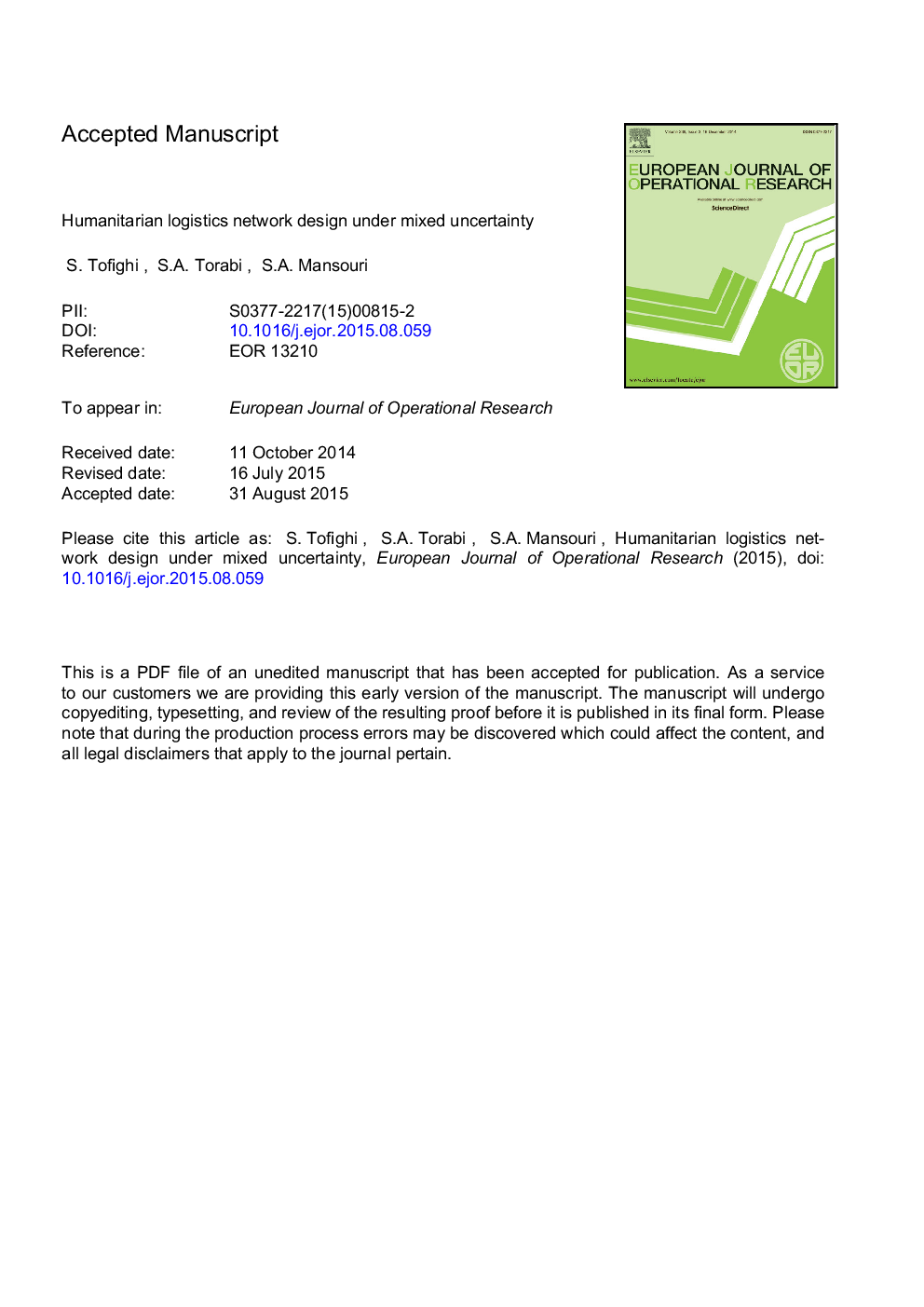| Article ID | Journal | Published Year | Pages | File Type |
|---|---|---|---|---|
| 6895999 | European Journal of Operational Research | 2016 | 35 Pages |
Abstract
In this paper, we address a two-echelon humanitarian logistics network design problem involving multiple central warehouses (CWs) and local distribution centers (LDCs) and develop a novel two-stage scenario-based possibilistic-stochastic programming (SBPSP) approach. The research is motivated by the urgent need for designing a relief network in Tehran in preparation for potential earthquakes to cope with the main logistical problems in pre- and post-disaster phases. During the first stage, the locations for CWs and LDCs are determined along with the prepositioned inventory levels for the relief supplies. In this stage, inherent uncertainties in both supply and demand data as well as the availability level of the transportation network's routes after an earthquake are taken into account. In the second stage, a relief distribution plan is developed based on various disaster scenarios aiming to minimize: total distribution time, the maximum weighted distribution time for the critical items, total cost of unused inventories and weighted shortage cost of unmet demands. A tailored differential evolution (DE) algorithm is developed to find good enough feasible solutions within a reasonable CPU time. Computational results using real data reveal promising performance of the proposed SBPSP model in comparison with the existing relief network in Tehran. The paper contributes to the literature on optimization based design of relief networks under mixed possibilistic-stochastic uncertainty and supports informed decision making by local authorities in increasing resilience of urban areas to natural disasters.
Related Topics
Physical Sciences and Engineering
Computer Science
Computer Science (General)
Authors
S. Tofighi, S.A. Torabi, S.A. Mansouri,
